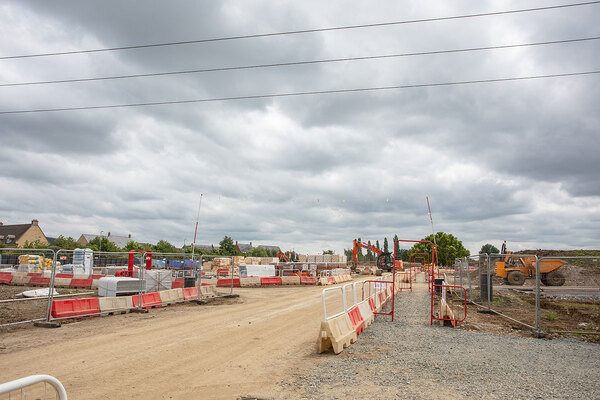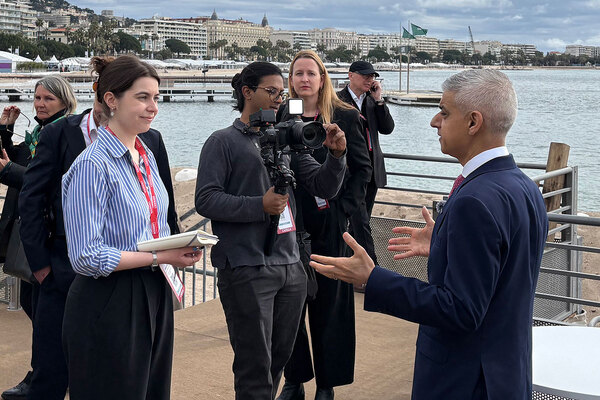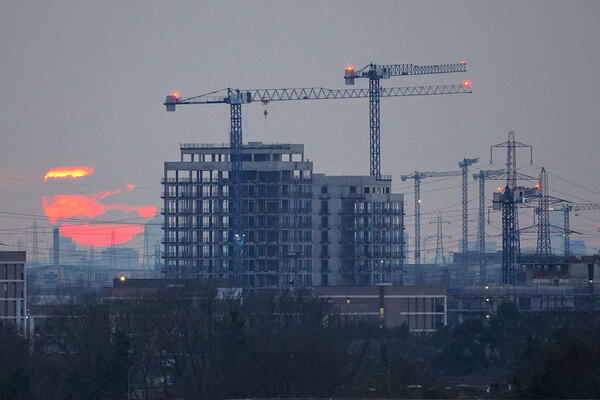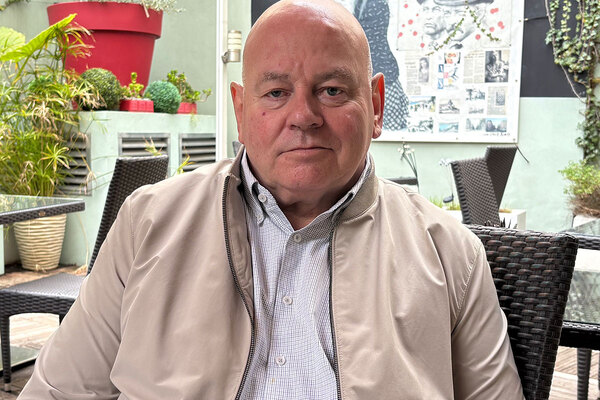The mayor’s plots
With extensive land holdings now under his control, recently re-elected London mayor Boris Johnson has more power than ever to deliver on his housing promises. But will he? Jules Birch investigates

It seems so obvious. To build new homes you need land. The public sector owns lots of land. Use it. It’s a message that the government is driving home at a national level with publicly owned sites identified for 103,000 homes. And it’s one that has particular resonance in London, where the cost of land is a key factor in soaring house prices - the average cost of a home in the capital stands at £293,375 - and rents, which rose by 9.3 per cent last year, according to property website findaproperty.com.
Boris Johnson, re-elected as London mayor last month, now has the power to do something about it. He has a new department, Homes for London, formed from the transferred London operations of the Homes and Communities Agency. He has a new deputy mayor for housing, Rick Blakeway, promoted from housing advisor. And above all he has land, lots of it.
Inside Housing’s Get on our Land campaign has the straightforward aim of freeing up land on which to build homes. Mr Johnson has already had four years in office, so how did he fare in terms of making land available for development, and how much is likely to be offered for housing over his new term in office?
The land bank
In theory, things are already looking up. Unlike during his previous term, the mayor’s land holdings now include those of the London Development Agency and the HCA for London, as well as sites already owned by other members of the Greater London Authority group and the London Legacy Development Corporation.
In his 2012 manifesto, the Conservative Party’s Mr Johnson said Homes for London would ‘bring 530 hectares of public land together and make that land available for development’ .
However, individual London boroughs and government organisations like the NHS also have significant holdings and establishing where all that land is and who owns it is far from simple.
‘The HCA and the mayor have done a really good job of identifying the land they own and what they want to do with it,’ explains Steve Douglas, partner at consultancy Altair. ‘But in terms of public land more generally across London things are much more patchy. The public land database will tell you how many hectares there are in public ownership but it doesn’t tell you how much is for housing, how much is within the housing revenue account and how much is for affordable housing.’
Broken promises
Mr Johnson’s opponents claim his record during his first term as mayor did not live up to his promises about releasing land. The mayor’s 2008 manifesto said surplus public land suitable for 32,000 homes had been identified.
In fact, says Nicky Gavron, a member of the London Assembly and the Labour group spokesperson on housing: ‘Completions on GLA land fell off a cliff during the past four years. Ken [Livingstone] got up to 2,169 homes on GLA land throughout his second term and Boris at the most added 1,077 during his first. Of those we think 304 were started by Mr Johnson and the rest were on sites that Ken had brought forward.’
New deputy mayor for housing Mr Blakeway responds: ‘It was this mayor who lobbied successfully to have the land transferred to the city at no cost. We’ve had real success with land release, with sites like Heart of Greenwich, Cane Hill in Croydon, and St Clements and Queen Elizabeth hospitals in Tower Hamlets so far. At one stage we were releasing one major site a month.’
All of these are actually former HCA projects, but Mr Blakeway says that, although the transfer of ownership only went through in April, the mayor was already playing an increasing role before that as chair of the HCA London board.
Looking forward, he says, ‘the big advantages of having the mayor in control are not just accountability but being able to drive forward delivery’.
Making it happen
That’s a point echoed by Phil McCarvill, co-author of a report on housing in London published last month by the think tank Institute for Public Policy Research. The report argued that it was crucial to use the capital’s public land for affordable housing and that the mayor should use a mix of approaches, including taking equity stakes in new development and building in contractual conditions on land use and the resulting tenure type.
‘I looked at what was happening in the west midlands where the land has gone from Advantage West Midlands to the HCA, and then at London where the mayor has the existing land, the LDA land and the HCA land,’ says McCarvill. ‘In Birmingham there is a real logjam and a blockage caused by things being one step removed.’
Mr Blakeway says the Johnson administration has already ‘led the way in deferring receipts to help bring sites forward and enabling work to start now’. It has also set up a new housing procurement panel of developers that all public sector landowners in London will be able to use from April 2013.
Nigel Minto, head of housing at London Councils, believes this is an important move, but says that once it’s in place: ‘We’ve got to look at changing people’s attitudes to the use of land. The boroughs, the mayor and the GLA all want to develop land, but you don’t always see that with the NHS and the police, which tend to look at disposing of their land for the maximum receipt.’
Something more is needed, he says, ‘otherwise we are left with institutional investment that has never got off the ground, the affordable rent model that has a lifespan and the HRA where borrowing is artificially restricted’.
Mr Douglas says that with land accounting for 30 to 40 per cent of the total cost of development, we need to ‘find some way to turn that around, discounting to reduce the cost so that the public sector gets a return in future years’.
‘The problem is Treasury restrictions,’ he says. ‘Both HCA London and the GLA explored deferred receipts, but Treasury restrictions do not allow them to sell or transfer land at below market cost.
‘The land is valued solely in capital terms. It’s not being valued in terms of its social benefits or the net contribution that new supply makes to the economy of London, the contribution to meeting housing need and reductions in benefits.’ The problem is with the Treasury rather than the GLA, he states.
Keith Exford, chief executive of housing association Affinity Sutton, which owns 20,000 homes in the capital, says this applies to development right across London. ‘One of the obstacles is the pressure on departments to maximise receipts and squaring the circle of bringing the land to market on terms that make it possible for the private sector to develop it out,’ he says.
‘The mayor needs to use his planning powers to ensure affordable housing is delivered on the sites to which it relates because what we are seeing is house builders saying their viability tests [builders’ tests of whether a site is viable to develop the affordable housing required by planning departments] are failing and a number of authorities relenting or taking offsite contributions [meaning they are taking a contribution of affordable housing on a different site].’
The land market is getting ‘hotter and hotter’ - rising in value - while the debate continues on how social landlords can finance new affordable homes, says Jerome Geoghegan, group director of development and sales at London & Quadrant.
Figures published by property services firm Knight Frank show development land in prime central London rose by 20.3 per cent last year. Alastair Baird, managing director of Barratt London, says ‘the GLA absolutely accepts that more homes of all tenure must be built and more public land needs to be released to facilitate that’.
‘Progress is being made to identify surplus land and bring that to the market in a way that ensures rapid development,’ he says. ‘However, progress now needs to be accelerated with particular focus on the wider government estate in London.’
More action
Mr Johnson’s opponents on the GLA argue that the mayor should be doing more with the land under his direct control.
He needs to be ‘very proactive and initiate a programme to build new social rented housing that is genuinely affordable and he could do that with GLA land’, argues Labour’s Ms Gavron. ‘If you use land as equity or deferred purchase you can bring down the cost,’ she adds.
Darren Johnson, London Assembly member and housing spokesperson for the Green Party, believes the mayor ‘doesn’t need to flog land off to the highest bidder’. ‘Getting best value might mean developing a green industrial park to create jobs, or supporting a community to regenerate a site for housing in an innovative way. These will have more lasting value than some quick cash and a block of luxury flats,’ he says.
Pressure is growing at a national level for investment in housing and infrastructure to bring growth to the economy - last month the Office for National Statistics revealed the UK economy shrank by 0.3 per cent in the first quarter of this year, more than previously thought, due to a bigger contraction in construction output than estimated previously. In light of this, the time seems right for action in London.
Both in the capital and nationally, progress has been slow.
‘The land we’ve seen is all slow-burn - barracks and hospitals - many of which are highly complex and difficult to develop,’ says Mr Exford, who sees the UK-wide picture in his role as a member of the Public Land Advisory Group, which has been set up by the prime minister to give expert advice to the government on the national public land initiative.
‘I can’t help thinking that most of the opportunities lie with local authorities. There is a paucity of ambition, even in the prime minister’s ambition that more than 100,000 homes should be built on public land. It won’t be delivered any time soon given the complexities I’ve seen.’
Experts like Mr Exford applaud the mayor’s work identifying the land under his control, but want to know what will happen now that he has so much more following the transfer of the HCA and LDA’s holdings.
So Mr Johnson and London have the chance to take a national lead. ‘There is a real opportunity to try to do something,’ concludes Mr Douglas, referring the powers that have been given to the mayor which mean he can start making housing development happen.
‘The challenge is still there, but if ever there was an opportunity to try and think beyond traditional approaches then this is it.’
The mayor’s land
According to the latest estimate, the mayor of London took direct control of 550 hectares of land in April following the abolition of the Homes and Communities Agency for London and the London Development Agency.
He already controlled land owned by the Greater London Assembly and organisations such as Transport for London, and the Fire Brigade, over which he has influence. The total does not include 64ha of land designated for new post-Olympics communities by the London Legacy Development Corporation. The LDDC started work in April as a mayoral development corporation, a single point of contact for regeneration as landowner, developer, planning authority and investor, and is accountable to Londoners through the mayor.
In the wake of the Localism Act, the mayor now combines landownership with control of investment decisions under the affordable homes budget.
He has already had strategic planning and housing powers that enable him to influence issues such as the proportion of affordable homes in major schemes and the priority given to family housing. Individual London boroughs must conform to his London Plan and housing strategy.
Figures for house building in London show that in the eight years prior to the mayoralty being established in 2000 housing starts averaged 14,300 a year. In Ken Livingstone’s first term between 2000 and 2004 starts averaged 17,000 a year and the annual total increased to 22,000 a year in his second term. Boris Johnson’s first term between 2008 and 2012 saw annual starts fall to an average of 16,500 a year (although this was in the wake of the credit crunch).
Mr Johnson’s manifesto
In his 2012 manifesto Boris Johnson has pledged to publish a list of all assets held by the Greater London Authority group, to create a single property group and to set up a new London Development Panel to accelerate the release of land in a cost-effective way.
The biggest opportunities are all in east and south east London. The big promises for development were:
- regeneration of the Royal Docks in Newham;
- unlocking stalled schemes such as the Greenwich Peninsula;
- releasing surplus sites such as the St Clements and Queen Elizabeth hospitals in Tower Hamlets, Newington Butts in Southwark and Silvertown Way in Newham.
Another key project will be Barking Riverside, where the Homes and Communities Agency’s stake in the joint venture company with Bellway Homes has transferred to the GLA.
In his 2008 manifesto, Mr Johnson argued that creating a network of community land trusts across London would be ‘the most creative and transparent use of public assets owned by the GLA’.
Deputy mayor Rick Blakeway says progress is still being made on CLTs at St Clements Hospital in Bow and Chobham Manor, the first Olympic Park neighbourhood.
However, a CLT-led scheme for St Clements was turned down by the Homes and Communities Agency, which appointed a different consortium. Darren Johnson, Green Party housing spokesperson, says the mayor must go further. ‘So far he hasn’t changed the prevailing regeneration culture that excludes local people,’ he says. ‘CLTs are about more than land, they’re about communities being in control from the early design stages through to the management of their permanently affordable homes.’








